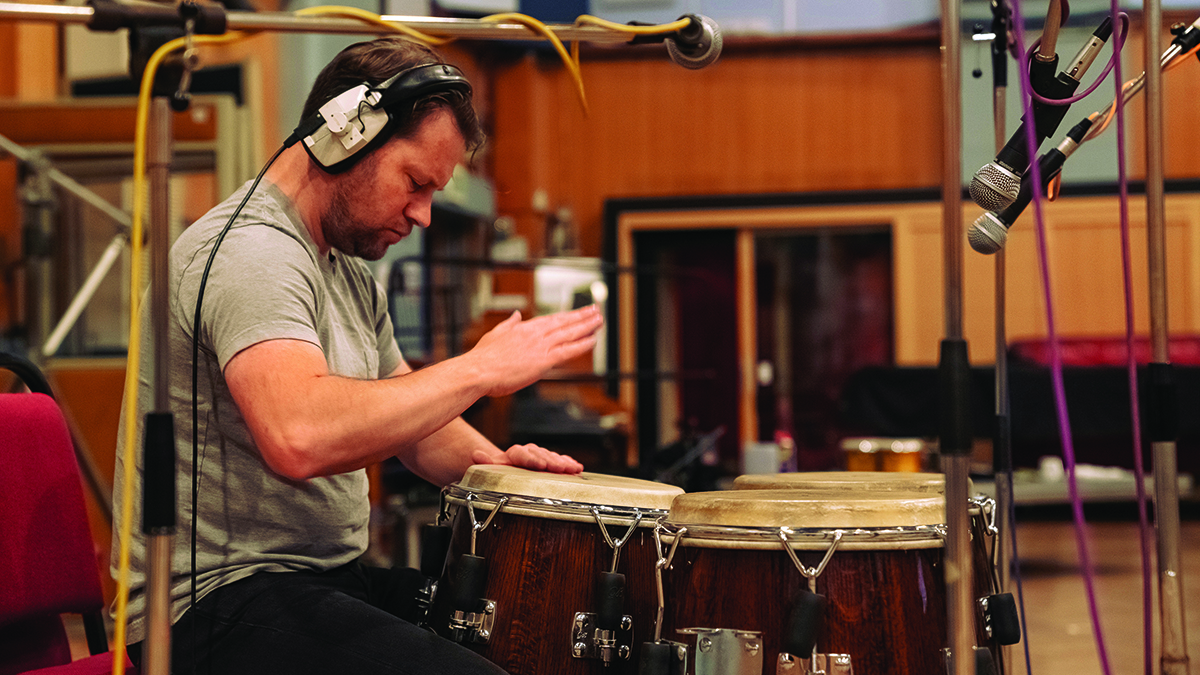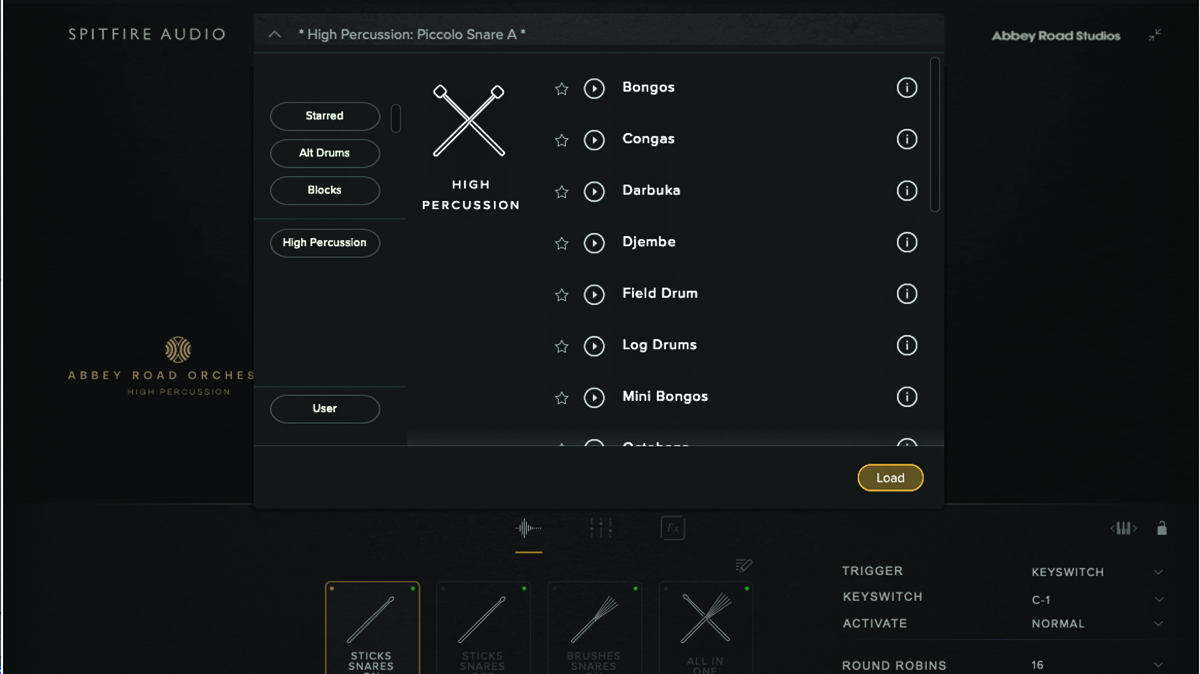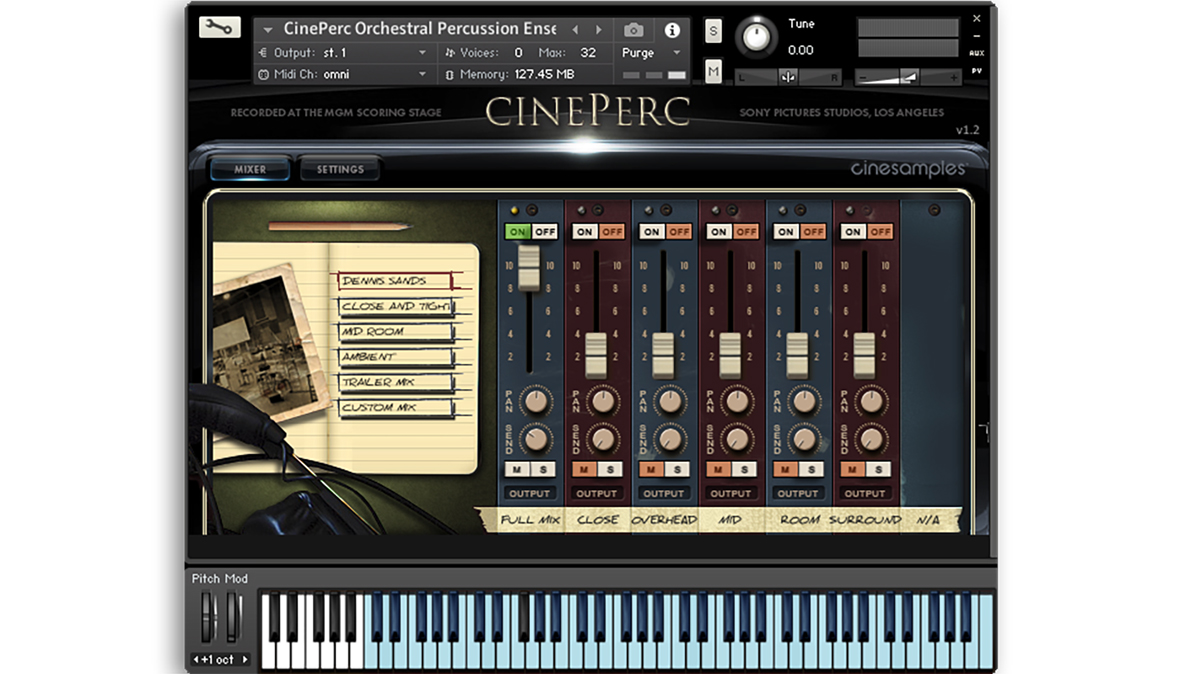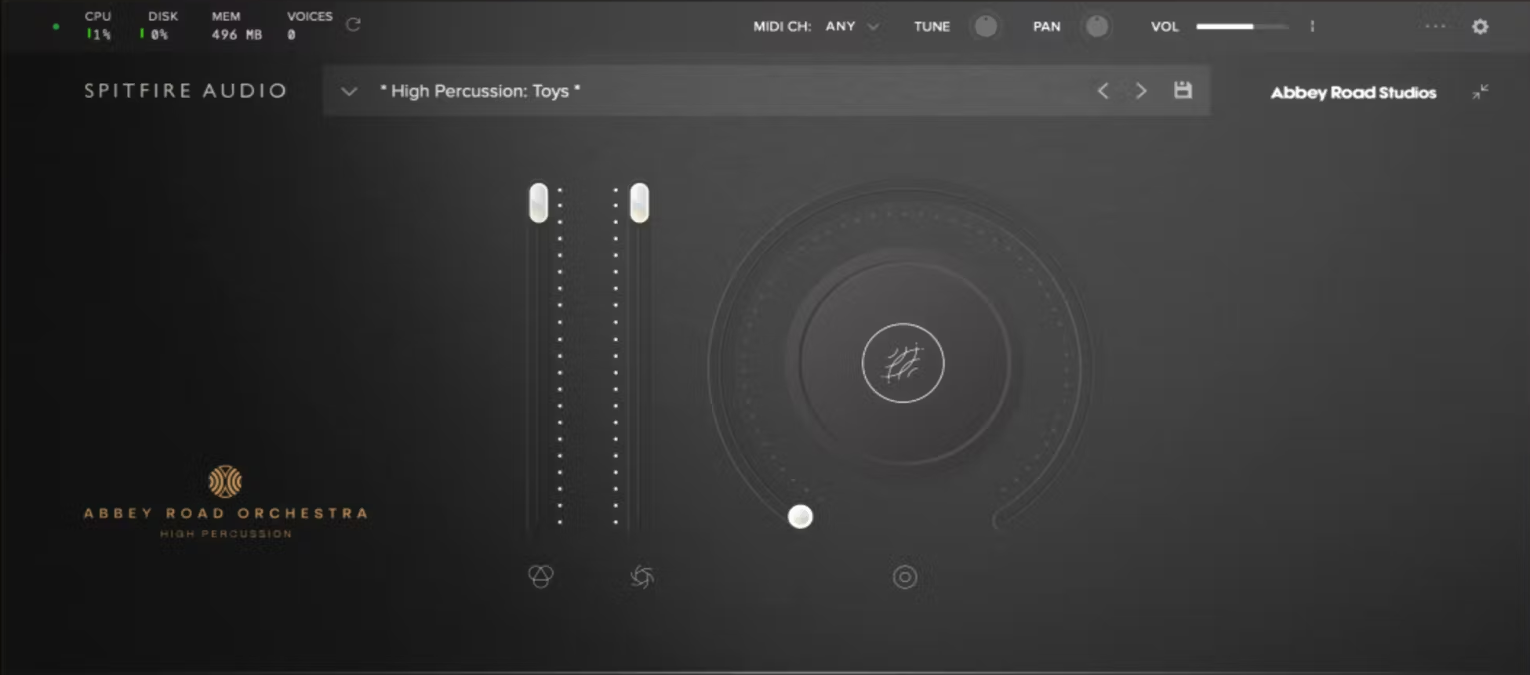MusicRadar Verdict
This library takes percussion to a high ebb, through its solid capture of great playing and instruments, from one of the finest recording venues in the world.
Pros
- +
Plenty of articulation variance.
- +
World-class venue and personnel.
- +
A real pleasure to play, using the split-keyboard assignment.
Cons
- -
Relies on Spitfire’s own plugin, which lacks multi-timbrality.
- -
Not a completist’s library.
MusicRadar's got your back
Spitfire Audio Abbey Road Orchestra: High Percussion: What is it?
Percussion has always played an essential role in musical scoring and production, but finding libraries which cater for the evermore bombastic demands of today’s soundtracks, hasn’t always been easy.
Ever since Spitfire Audio first forged an alliance with Abbey Road Studios, a couple of years ago, we’ve been getting a constant feed of libraries recorded at Studios 1 and 2 coming through in new releases.
It feels like there’s about to be a groundswell in the direction of Studio 1, as Spitfire’s latest library appears in your DAW plugin list as Abbey Road Orchestra.
The latest release follows the floor-shaking endeavours of Low Percussion, with the much brighter and arguably more substantial High Percussion.
We’re firmly in the realm of drum and hand percussion, rather than tuned or mallet-based instruments, and all recorded from within the hallowed acoustics of Studio 1 at Abbey Road.
It’s one of the premier soundtrack scoring locations in the world and provides an altogether different acoustic to Spitfire’s previous orchestral libraries, located at Air.

Burgeoning talent
Putting a percussionist through the paces of a sampling session of this size is no menial task. Spitfire called upon the talents of one the UK’s finest, Joby Burgess, who presents an enviable reputation as both a session player and performer.
He is also no stranger to Abbey Road, having recorded as lead percussionist on features such as Black Panther and Rocketman. Burgess also employs varied playing techniques, using hands, mallets and sticks, across many of the drum-based instruments.
Meanwhile, on the other side of the glass, long-time engineer and Spitfire associate, Simon Rhodes, handles technical and recording details. The result within the library is an extensive array of captured mic signals, from modern and vintage mics, to two pre-prepared mixes, adopting the signature acoustic of Studio 1.
The result is a library with gravitas, thanks to an overarching sense of attention to detail, captured across all instruments and articulations.

Spitfire Audio Abbey Road Orchestra: High Percussion: Performance and verdict
So what do we have in the percussion b
ox today? The simple answer is just about everything that you’ll need in this category of sound, captured from a single percussionist.

• Cinesamples Cineperc
Recorded within a scoring stage environment, this library delves deep into percussive resources.
• Audio Imperia Cerberus
Hits, rolls and inspiring loops, alongside Audio Imperia’s enviable sound design elements.
The alphabetical menu listing begins with bongos and congas, before moving to a couple of world classics in the shape of darbuka and djembe. There’s plenty of convention here too, via snares, mini snares and field drums, alongside contemporary instrumentation, such as roto toms and octobans.
There are also timbales, although strangely the associated Latin counterpart of the cowbell is not represented. Cowbells are debatably tuned, which might explain the absence, but then so are wood blocks, and these are included.
One of the most elaborate and entertaining instrumental sections is branded as the Toy section, which reveals nine different small/hand percussion instruments, ranging from shakers to claves, ratchets and even a vibraslap and guiro. We had a lot of fun with the guiro, thanks to its extensive velocity zoning, and variation of slide length. It’s very appealing!
Playing around the Robin
All articulations are key-switchable from within each instrumental section. Through a very sizeable collection of close and ambient microphone setups, you can really hone your sound, by visiting the mixer page and activating your desired channels.
As you audition instruments from the loading menu, the mic assignment does however reset, which we found a tad tiresome. If you like a particular mic blend, you might prefer to maintain it as you audition instruments, rather than have it reset as you load your next choice. You could, of course, re-save your patch for next time.
Playing the sampled instruments themselves is quite the pleasure though. The split keyboard assignment allows the use of more than one note to trigger the same sample, so you can play the percussion quite naturally, as a percussionist naturally might.
The Round-Robin count is also quite high; most of the samples include 12 or 16 samples, relieving the machine-gun-styled percussion effect that can ensue from a minimal sample count.
Percussive tendencies
As a package, this is a pretty extensive library; not the most exhaustive in the marketplace, but substantial when it comes to providing the essentials alongside a host of lesser required instruments which will always have their use from time to time.
High Percussion exists within Spitfire’s own player which is not multi-timbral. As a sample player format, it continues to split a room faster than a jar of Marmite, but as a library, it sounds consistently good, captured within a world-class facility, which sounds expensive, and that’s by far the most important consideration.
MusicRadar verdict: This library takes percussion to a high ebb, through its solid capture of great playing and instruments, from one of the finest recording venues in the world.
Spitfire Audio Abbey Road Orchestra: High Percussion: The web says
"This is a world-class collection in every sense of the word."
Sample Library Review
Spitfire Audio Abbey Road Orchestra: High Percussion: Hands-on demos
Spitfire Audio
Sample Library Review
The Sampleist
Spitfire Audio Abbey Road Orchestra: High Percussion: Specifications
- Mac OS X 10.13 to OS X 12. Minimum: 2.8GHz i5 (quad-core), 8GB RAM. Recommended: 2.8GHz i7 (six-core), 16GB RAM. Intel and M1 Macs supported. 64-bit DAW Required (32-bit DAWs not supported).
- Windows 7, Windows 8, Windows 10 and Windows 11 (latest Service Pack, 64-bit). Minimum: Intel Core 2.8GHz i5 (quad-core) or AMD Ryzen 5, 8GB RAM. Recommended: Intel 2.8GHzi7 (six-core) or AMD R7 2700, 16GB RAM. 64-bit DAW required (32-bit DAWs not supported).
- Download size: 98.05GB.
- CONTACT: Spitfire Audio
Computer Music magazine is the world’s best selling publication dedicated solely to making great music with your Mac or PC computer. Each issue it brings its lucky readers the best in cutting-edge tutorials, need-to-know, expert software reviews and even all the tools you actually need to make great music today, courtesy of our legendary CM Plugin Suite.
“91% believe dynamic pricing should be outlawed”: Music fans have spoken: The Music Fans Voice survey has just released its results
The obscure Andean instrument heard on The Last of Us' soundtrack is the star of Spitfire Audio's latest plugin
"MC5 were playing on the radio": Pere Ubu founder David Thomas has died after “a long illness", aged 71











